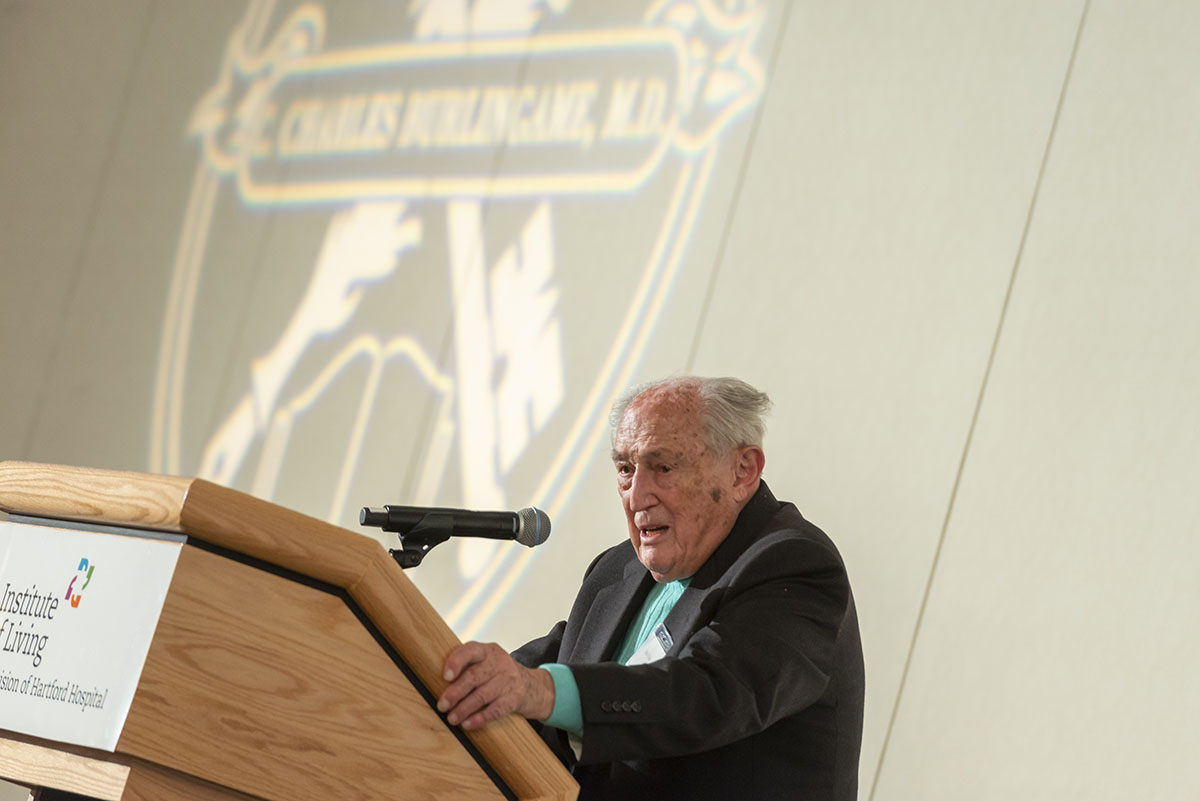<< Back
Legendary Physician Wins Institute of Living Burlingame Award

October 25, 2019
Dr. Hank Schwartz doesn’t throw the adjective “legendary” around loosely, so when he used it to describe this year’s winner of the Dr. C. Charles Burlingame Award, it spoke volumes.
Indeed, that winner, Dr. Max Fink, a pioneer and champion of the use of electroconvulsive therapy (ECT), has generated volumes of research, stood firmly in the face of often degrading protests and consistently pushed to influence the public’s perception of the treatment used to ease various behavioral health disorders.
“He practiced ECT at a time when it was called cruel and Nazi-like,” said Dr. Schwartz, psychiatrist-in-chief emeritus of the Institute of Living (IOL), as part of his introduction at the recent Burlingame Awards night. “Dr. Fink pushed back against this for 65 years in what was a remarkable advocacy effort. We have our world-class ECT program here at the IOL because of our awardee tonight.”
Dr. Fink – who established the Department of Experimental Psychiatry at Long Island’s Hillside Hospital with studies in ECT, electroencephalography (EEG) and psychotropic drugs, and served on the faculty at Stony Brook University School of Medicine – has published textbooks, ECT guides for patients and families and created the Journal of ECT for behavioral health professionals.
In deference to his legacy of highlighting the value of a misunderstood and often feared treatment, Dr. Fink titled his presentation “Dalliance with Psychiatry’s Maiden Aunt: Six Decades of Homage.”
“ECT has been treated like a well-loved maiden aunt – although she’s talented, she’s branded with a scarlet letter for brain damage and memory loss and is banned in many hospitals,” Dr. Fink said, referring to the potential side effects of the electric shockwaves, which induce seizures that can help many behavioral health patients.
“It’s rarely even acknowledged in medical school,” said Fink, calling the IOL – which averages 20 ECT treatments in sessions held three days a week – “in the swing, so to speak.”
Having started training in ECT in 1952, Dr. Fink said he later combined the treatment with EEG, tapping into a National Institutes of Health grant to determine the effectiveness.
“Our paper sounded the death knell for insulin comas and (Hillside) closed its 22-bed ward, offering it to me for my treatment,” he said.
It was a constant challenge to battle the negative stigma ECT received in the media and films like “One Flew Over the Cuckoo’s Nest,” and Dr. Fink’s many professional lectures were subjected to ongoing protests by Scientologists and others who often confused the treatment with the more radical lobotomy.
“We had a problem getting this accepted by the public and I was protested at meetings across the United States and Europe,” he recalled. “I was accused of being paid to push the treatment.”
At age 96, Dr. Fink perseveres in his efforts to enlighten the public and behavioral health practitioners about the value of ECT.
“My mission tonight is to tell you the personal stories about the battle for this unusual treatment; the battle to get this accepted,” he told the audience of approximately 300.
For more information about the IOL and its ECT program, visit www.instituteofliving.org.